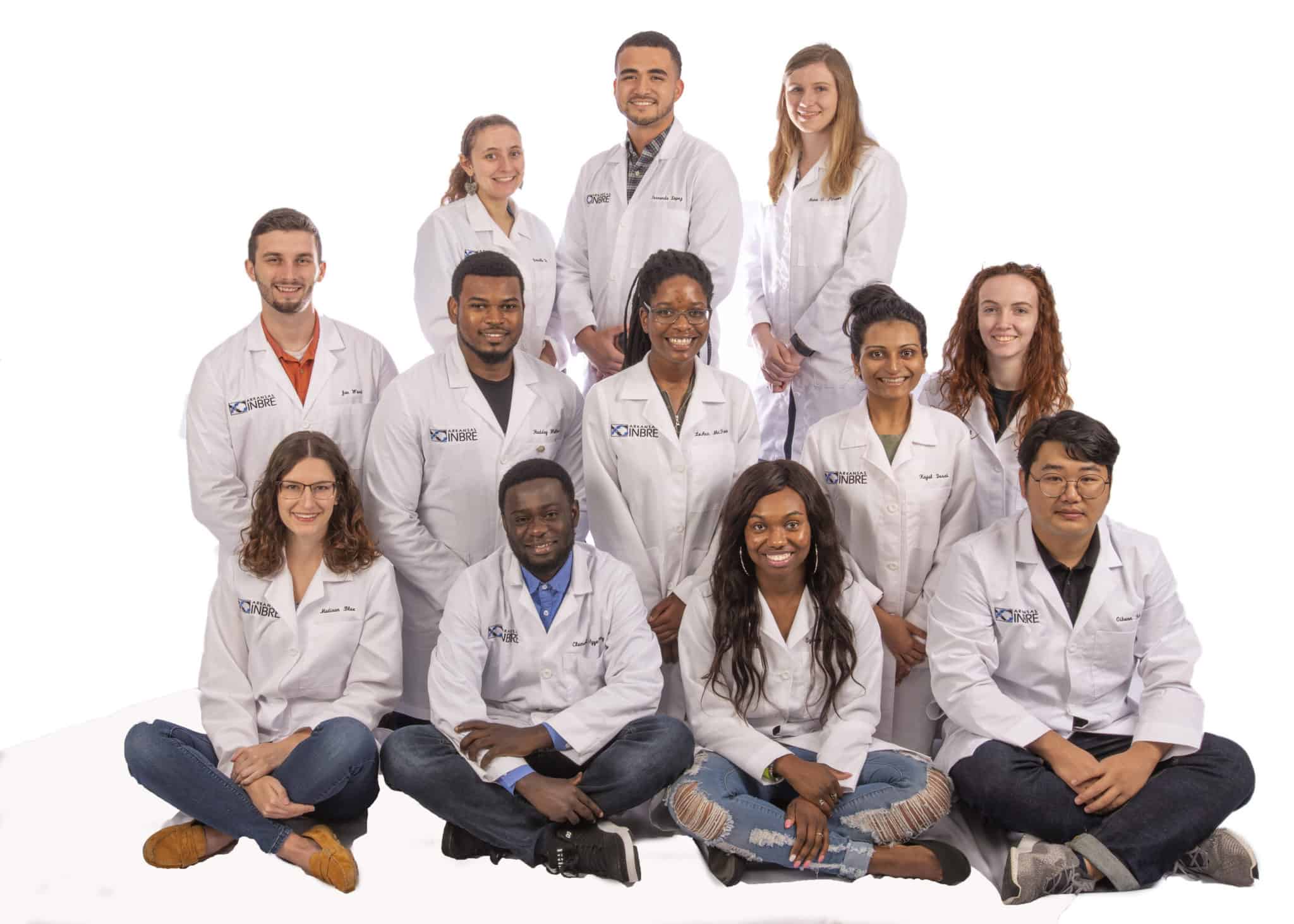Arkansas INBRE Receives 5-Year Funding of $18.4 Million to Promote Biomedical Research Across Arkansas
| Arkansas INBRE, which promotes biomedical research with programs for undergraduate students and faculty statewide, has seen its federal funding renewed for $18.4 million over the next five years.
While the University of Arkansas for Medical Sciences (UAMS) is the lead institution, INBRE grants and programs have impacted nearly all colleges and universities in the state during the 20-year history of the IDeA Networks of Biomedical Research Excellence program.
“What we’ve managed to develop is a whole ecosystem that promotes biomedical research in Arkansas,” said Lawrence E. Cornett, Ph.D., Arkansas INBRE director. “After 20 years, we have students who were introduced to research by INBRE and are now career scientists or physicians. We have supported research that has produced exciting findings and impactful publications. We have purchased game-changing technology and supported new academic programs.”
The grant comes from the National Institute of General Medical Sciences, which is part of the National Institutes of Health in the U.S. Department of Health and Human Services. With this latest funding, Arkansas INBRE has received a total of $78.5 million to date. IDeA refers to the Institutional Development Award (IDeA) program, which builds research capacity in states that historically have had low levels of NIH funding. IDeA grants, including INBRE awards, are awarded to Institutions in 23 states and Puerto Rico.
Arkansas INBRE is perhaps best known statewide for its research opportunities for undergraduate students. About 15 students annually spend their summer at UAMS or the University of Arkansas, Fayetteville conducting research, and INBRE funds similar opportunities at four-year institutions statewide. For many of the students, it is their first time conducting research, working in a lab, and presenting their findings with posters and oral presentations.
INBRE also provides funding for faculty research at the four-year institutions in the state. Many of these grants include the requirement that faculty provide opportunities for undergraduate researchers to work in the lab.
“We track the success of these programs in inspiring students to pursue STEM careers and have found them to be successful by a number of measures,” Cornett said. “Additionally, from an anecdotal standpoint, we find the students who are introduced to hands-on science early on go on to be better students when we see them again as medical students, pharmacy students and graduate students at UAMS.”
Additionally, Arkansas INBRE has funded the purchase of technology and the development of new research areas. For example at UAMS, these investments helped develop the UAMS Proteomics Core, which enables protein characterization by mass spectrometry. The lab is available to scientists both on the UAMS campus as well as across the nation, and has enabled a whole new area of research in the state.
Likewise, Arkansas INBRE invested in early biomedical informatics research at UAMS, which was just exploring this emerging scientific field at the time. Today, this investment has expanded into a thriving Department of Biomedical Informatics and graduate degree program hosted jointly with the University of Arkansas at Little Rock. Biomedical informatics uses advanced computing and large datasets to bring new levels of analysis to health data. This has many applications, and, for example, can help researchers identify previously unnoticed health care trends.
“Each of these efforts have served the aim of building biomedical research capacity in the state, starting from the ground up,” Cornett said. “The result is a synergy in biomedical research in Arkansas that we are happy to be able to continue to nurture with this additional funding.”
In addition to the many students and faculty who are contributing to this spirit of biomedical science in Arkansas, Cornett credited the contributions of several individuals involved in Arkansas INBRE past and present: Jerry Ware, Ph.D., Arkansas INBRE program coordinator; University of Arkansas System President Donald R. Bobbitt, Ph.D, who was the original outreach core director for the program; Roger Koeppe, Ph.D., former outreach core director; Feng Wang, Ph.D., current outreach core director and faculty member in the University of Arkansas Department of Chemistry & Biochemistry.
UAMS is the state’s only health sciences university, with colleges of Medicine, Nursing, Pharmacy, Health Professions and Public Health; a graduate school; a hospital; a main campus in Little Rock; a Northwest Arkansas regional campus in Fayetteville; a statewide network of regional campuses; and eight institutes: the Winthrop P. Rockefeller Cancer Institute, Jackson T. Stephens Spine & Neurosciences Institute, Harvey & Bernice Jones Eye Institute, Psychiatric Research Institute, Donald W. Reynolds Institute on Aging, Translational Research Institute, Institute for Digital Health & Innovation and the Institute for Community Health Innovation. UAMS includes UAMS Health, a statewide health system that encompasses all of UAMS’ clinical enterprise. UAMS is the only adult Level 1 trauma center in the state. UAMS has 3,485 students, 915 medical residents and fellows, and seven dental residents. It is the state’s largest public employer with more than 11,000 employees, including 1,200 physicians who provide care to patients at UAMS, its regional campuses, Arkansas Children’s, the VA Medical Center and Baptist Health. Visit www.uams.edu or uamshealth.com. Find us on Facebook, X (formerly Twitter), YouTube or Instagram.###
